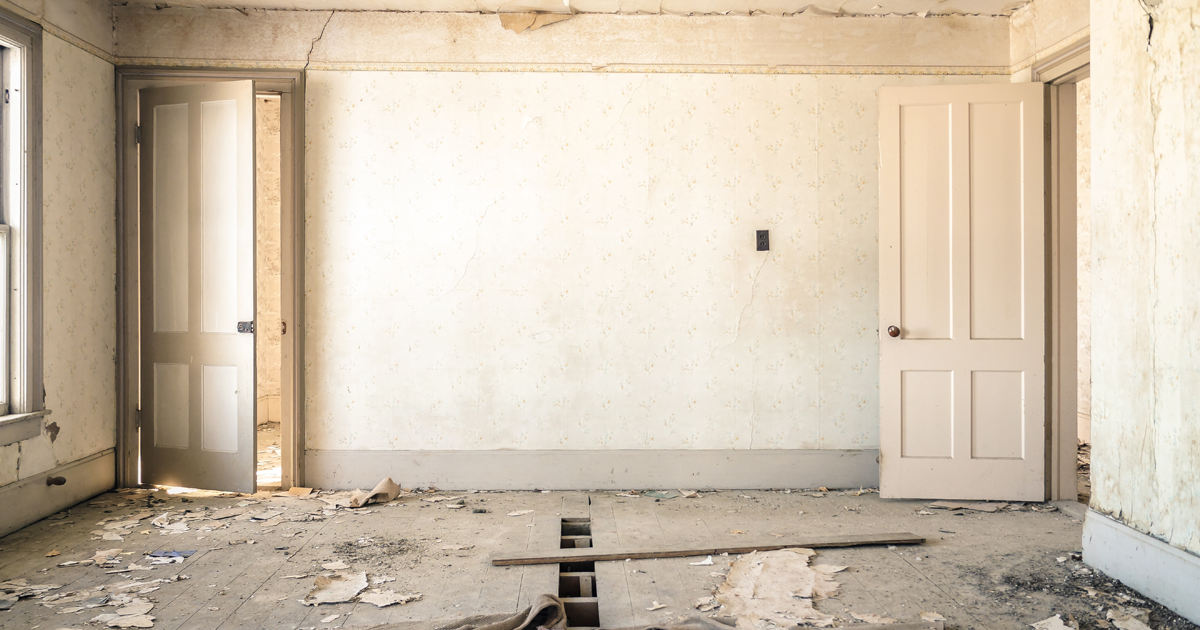Are you wondering how to estimate and calculate rehab costs? The better you get at estimating rehab costs, the more successful you’ll be at flipping houses. And there’s a wide gap between those who are guessing and wishing versus pros who have an established and proven system.
As you gain experience, you’ll learn how to walk through a property and quickly — and accurately — assess the rehab costs.
It’s important to note that prices vary widely by regions of the country and can even vary within the same state. The cost of materials is often dependent upon the time of year and labor costs are vastly different depending upon where you’re located; California prices are completely different than prices in Alabama.
Because of that, it’s difficult to detail exactly how much your 1,200-square foot rehab will cost. In addition to labor and materials, there’s location. Is it a first-time homebuyer neighborhood in North Carolina or the Gold Coast of Connecticut, for example?
However, your approach on how to estimate repair costs on a rehab will be similar regardless of project and location.
So with that said, here are some tips to help you estimate rehab costs like a pro.
Know the cost of materials
This is probably the easiest thing you can do to prepare. Create a file and visit your local Home Depot and Lowe’s stores to find the prices of lumber, windows, flooring, paint, and the like.
Then branch out and learn what lumber yards are in your area and what other stores you can buy material from. You may find that you purchase sheetrock from one place, carpet from another, paint from a third, and plumbing supplies from a fourth.
Don’t assume a specialty store can’t compete with the big box prices, either. A lot of them work directly with contractors and can offer competitive prices along with better quality. They’re also typically owned by professionals who are specialists. Think how valuable it can be to discuss the pros and cons of various electrical fixtures, for example, with an owner who’s an expert. They’re also a great source of referrals when you need a reliable contractor.
You should also speak with the pro desk or managers to discuss membership and pricing. As you do more projects, you should be able to negotiate better prices for material and get contractor pricing.
The point is, you won’t know who has the best quality and price until you visit them, and they’ll help you get your materials list ready before you even start your first project. Materials are easy; it’s the labor that gets tricky. So save yourself some time and guesswork on this step.
Here are a few general guidelines for rehab material costs per square foot:
- Carpet is sold (and typically installed) by the square yard, so make sure you do the math correctly. The range for basic carpet tends to be $9-$15 and depends on material. Don’t forget to add in carpet pad as well, which is generally in the range of $2-$3 a square yard.
- A basic six-paneled, primed interior door slab is about $100-$150 for a solid (not hollow) door; pre-hung doors, which come with the frame, run closer to $180 or $200 each.
- Bathroom vanities with tops can sell for as little as $100, depending on size — but tend to look cheap at that price point. You’ll likely spend closer to $150-$400.
- Kitchen appliances: basic refrigerators range from about $400-$800, with French door styles in the $1,200-$2,200 range; Single oven electric ranges, about $400-$600; Dishwashers $250-$400; and microwaves $150-$250.
- Roofing: Typically calculated by the square, which is 10’ x 10’ (100 square feet); so a 700-square foot roof is 7 squares. Asphalt shingles, the most common material, runs about $150-$400 per square for roof replacement.
- Kitchen cabinets are typically calculated by linear foot, with mid-range semi-stock cabinets running about $150/lf
Understand the time involved
Do you know how long it takes to replace a roof? Or to install a new window?
If you don’t, you probably want to hold off on tackling that first rehab project until you do.
Many newbie investors find their early projects derailed because of simple lack of information. That new roof? It can be done in a day or two. But investors who don’t know any better can be duped into believing a contractor who tells them it’ll take two weeks (a whole new roof sounds like a big deal, after all!).
Many components of a rehab can be done in surprisingly quick time … while others take longer than you think. But if you don’t know the typical time frames, you set yourself up to lose a lot of money between overpaying contractors and mounting holding costs.
Time is every bit of an expense as materials and labor. When you consider that your project could cost you $100/day in holding costs, you quickly realize how every small delay can add up and why you need a sense of urgency. Two weeks versus two days for that roof, for example, just cost you an extra $1,200 or more.
Estimate by category and function, not room
This one takes some practice but improves accuracy and planning.
Rather than walking through and calculating the cost of the kitchen rehab, then the bathroom rehab and bedroom rehab, think in terms of categories. Think function.
This means your rehab estimate includes things like plumbing, electrical, flooring, and finishes. It’s also broken into exterior and interior work.
Think about it: you don’t have a “kitchen contractor” and a “bathroom contractor”. You have a plumber who’s going to replace the kitchen sink and also fix the issues in the bathroom and elsewhere. You have a carpenter who’s going to hang doors for the bedrooms and also do your trim work.
When you draw up a Scope of Work by function, you also improve the flow of your rehab. You understand what order the rehab work needs to proceed: demo, plumbing, electrical, HVAC, framing, etc. This will make the work go quicker, help you better envision the rehab as a whole, and you will also understand whether your contractor is on schedule.
*True, you’ll still wind up mentally calculating the cost of the kitchen rehab and talking about it as such. But that’s a byproduct of understanding the details.
Remember the finishes and miscellaneous items
It’s fun to knock down walls and to watch the exterior of a house be transformed with new siding. But you know what often makes or breaks the project?
Finishes. As in, trim and hardware plus other miscellaneous items.
These not only improve the aesthetic of the entire house — which makes a difference when you list the property and can help you sell faster — but they add up and can total in the thousands. Estimating rehab costs by making a detailed list of everything you need, as if you were about to go shopping for it, helps to avoid missed items.
Additional Costs
Rehabilitating a property often comes with extra costs that investors fail to consider because they think the amount is insignificant. The finishing touches may only cost a few dollars per item. Yet if you need hundreds of them, or you’re planning to hire someone to install them for you, add them to the estimate.
When you estimate rehab costs, make sure to detail how many doorknobs you’ll need (this one will probably surprise you), how many knobs for the cabinets, how many door stops and hinge stops, how many outlet covers and switch plates, and how much baseboard.
Then remember the labor involved. These are small items but they do take some time; you might replace 50 outlet covers and 20 switch plates, for example.
It’s also a good idea to hang miniblinds, which improve the look and feel of the house. These are inexpensive but again, take some time to hang. And don’t forget about a good cleaning; your contractors should leave the place broom clean, but it’s a good idea to hire a housecleaner to scrub things down and make it shine.
These items plus the labor involved can easily run $1,000 or more. When you become super detailed in your planning and remember to account for them from the beginning, you keep more money in your pocket.
It can seem overwhelming at first to calculate all of the costs involved and to coordinate the contractors and people needed to make a rehab project successful. That’s why it’s always a good idea to start with something smaller and less complicated rather than a gut job.
The good news is that rehab projects have a steep learning curve; you’ll figure things out pretty quickly and that carries over into the next one. And although every project involves something unexpected — remember your contingency budget! — you will also find a number of common repairs that you’ll repeat from one house to the next.
The goal, as always, is to do your research and to approach every project like a pro. Learning how to estimate rehab costs is a professional skill. That way, you’ll wind up being paid like one, too.That way, you’ll wind up being paid like one, too.







Great info….